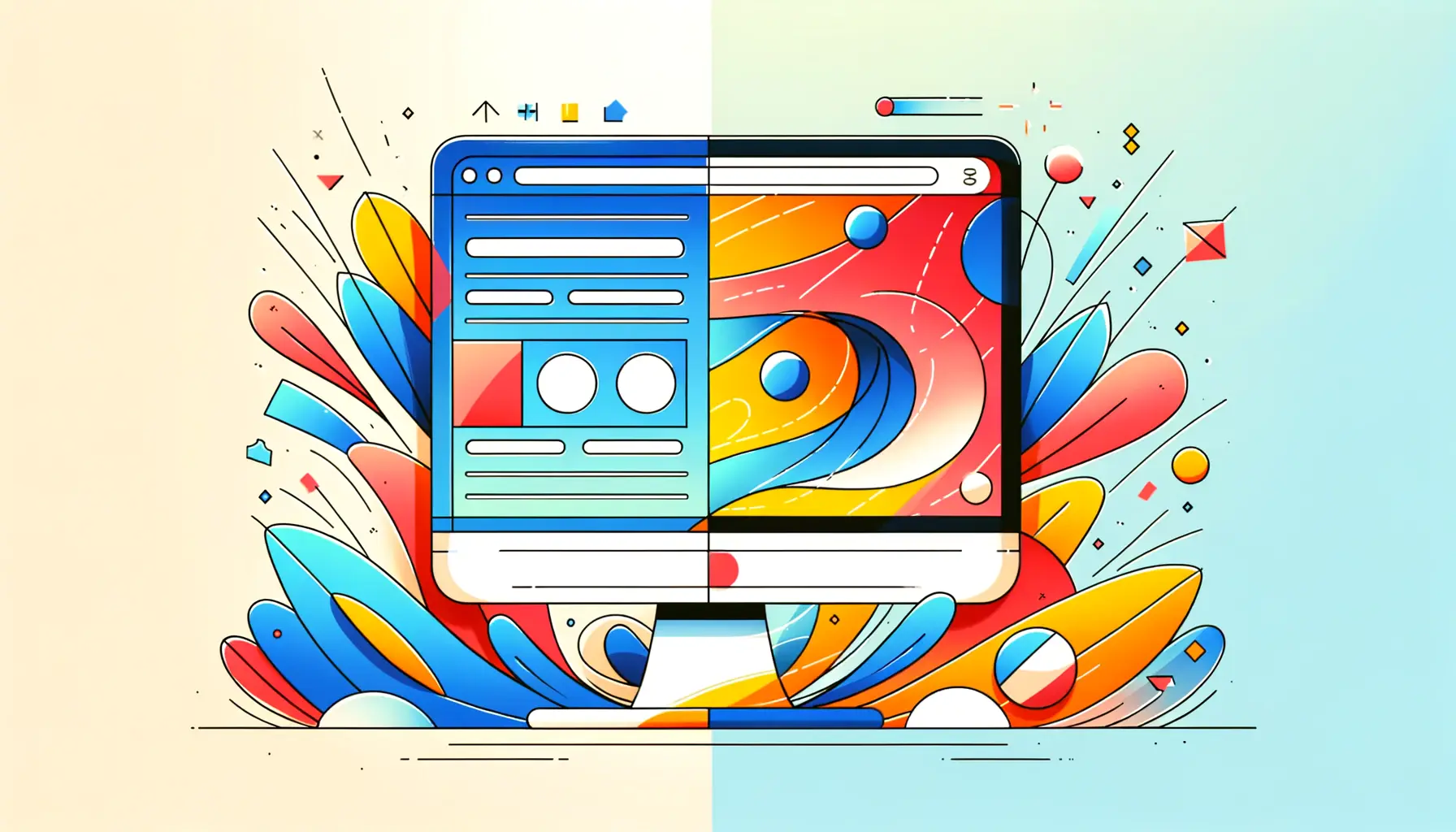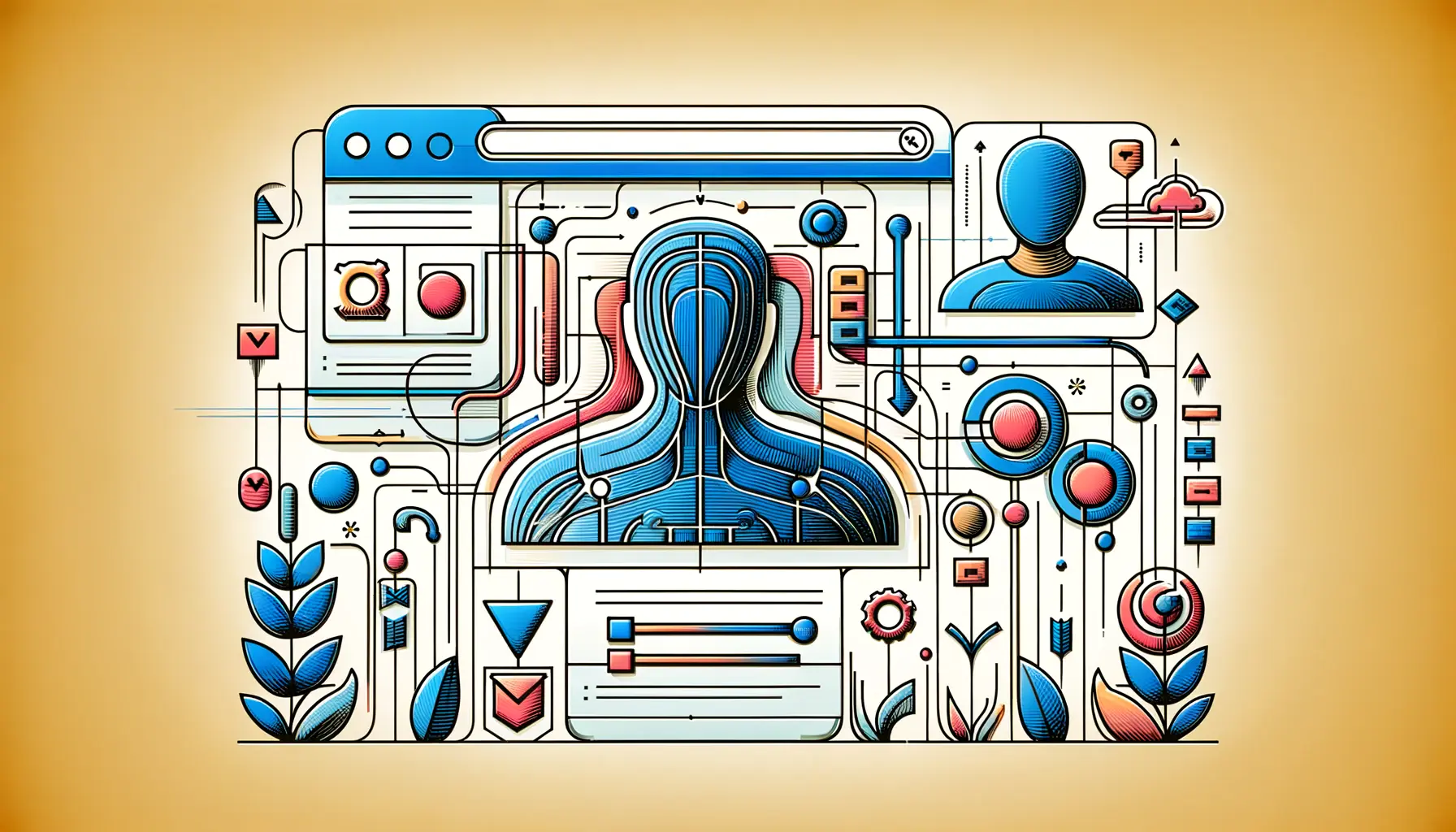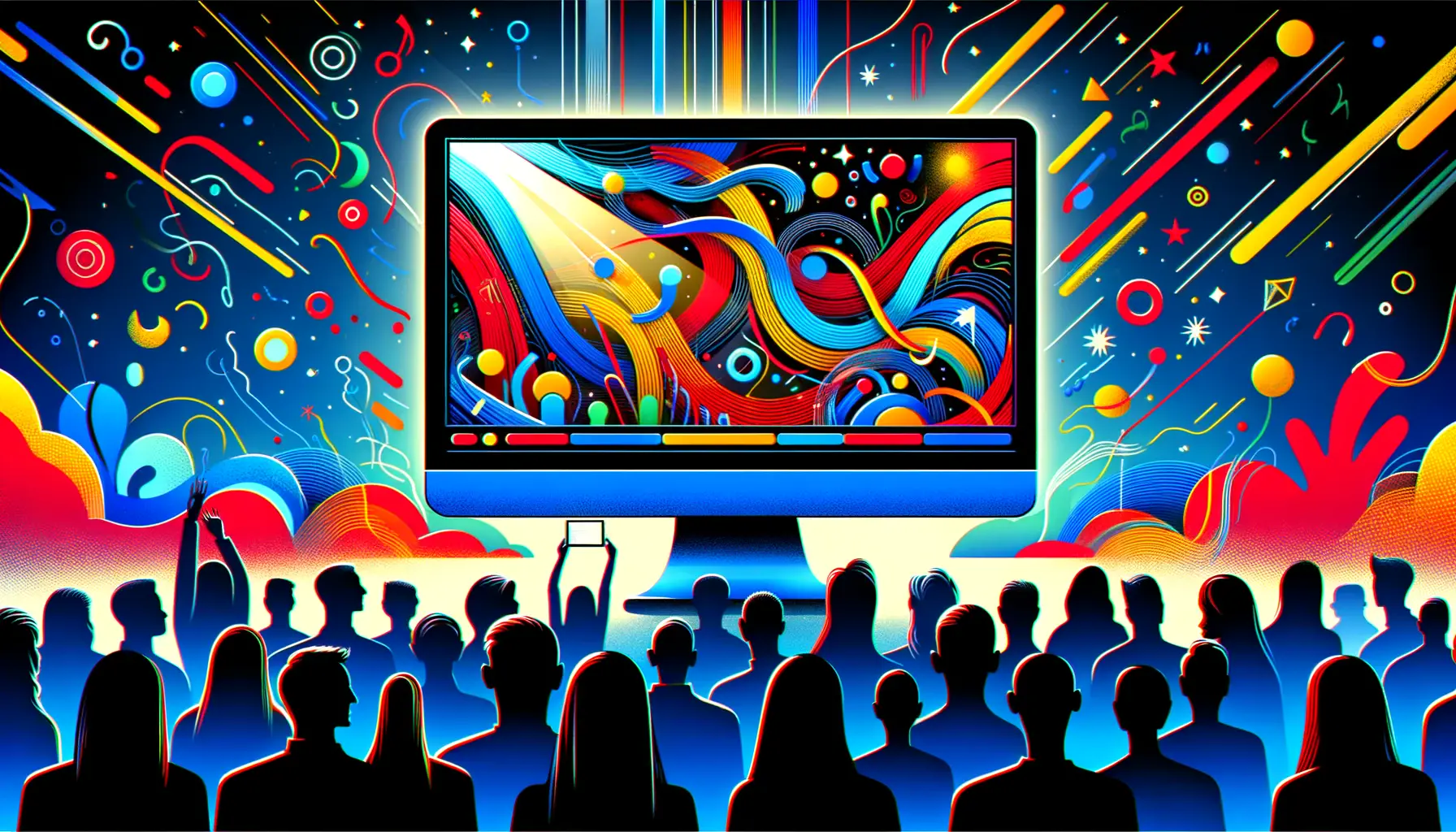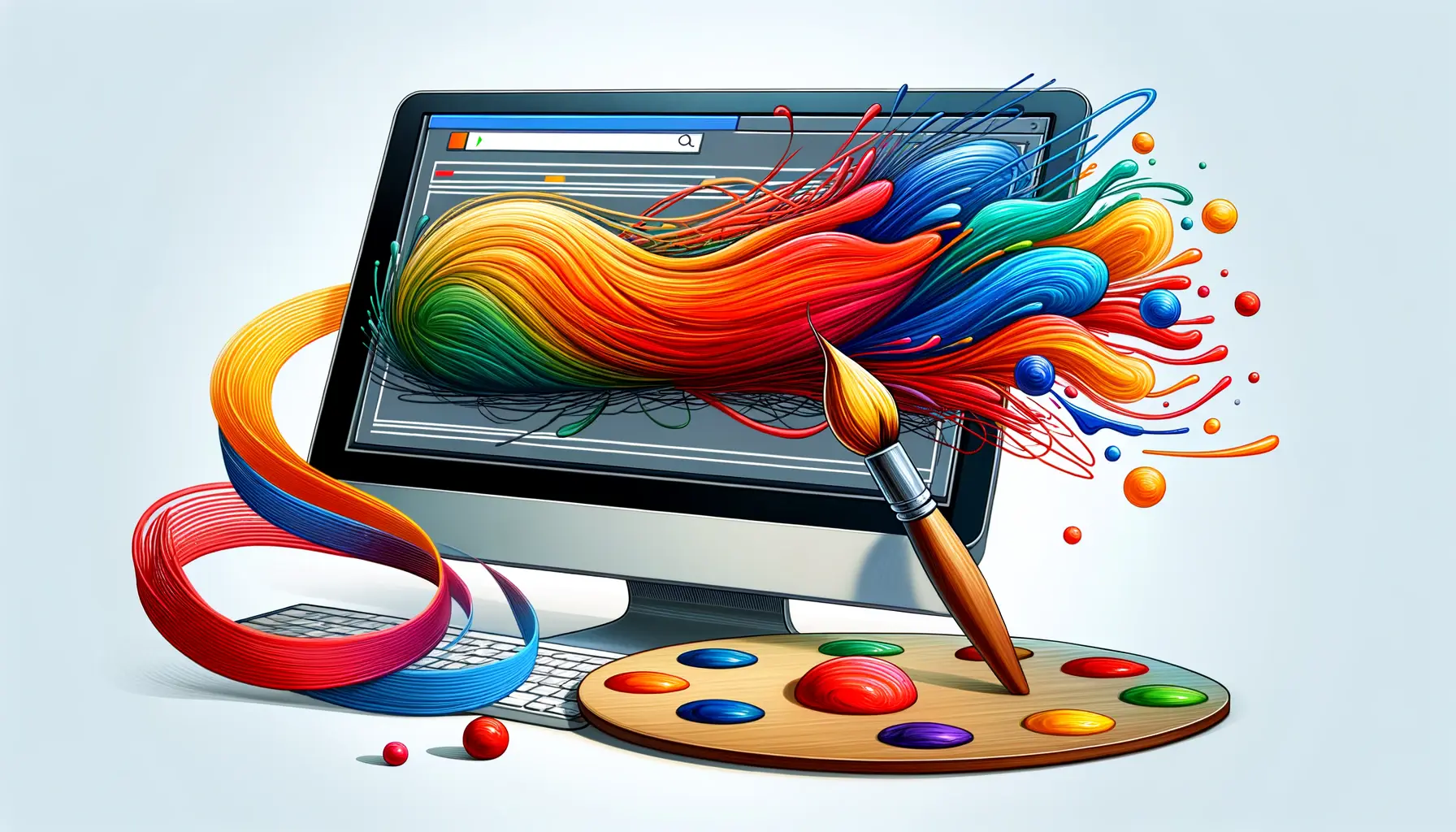Web accessibility is a crucial aspect of modern web design, ensuring that websites are usable by everyone, including people with disabilities.
Animation, a dynamic and visually engaging element, plays a significant role in enhancing user experience on the web.
However, its impact on web accessibility is a nuanced subject that warrants a closer examination.
This article delves into the intersection of animation and web accessibility, exploring how animations can both aid and challenge the accessibility of digital content.
Animations have the power to attract attention, guide users through a website, and provide feedback on interactions.
When implemented thoughtfully, they can make digital experiences more intuitive and enjoyable.
Yet, for some users, particularly those with certain disabilities, animations can pose significant barriers.
Understanding the balance between creating engaging web experiences and maintaining accessibility is essential for designers and developers aiming to create inclusive websites.
- Understanding Web Accessibility
- Challenges of Animation for Accessibility
- Best Practices for Accessible Animations
- Incorporating Accessibility into the Animation Design Process
- Technological Solutions for Accessible Animations
- Case Studies: Accessible Animations in Action
- Future Trends in Accessible Web Animations
- Embracing the Future of Accessible Animations
- FAQs on How Animation Can Affect Web Accessibility
Understanding Web Accessibility
What is Web Accessibility?
Web accessibility refers to the practice of making websites usable by people of all abilities and disabilities.
This encompasses a wide range of considerations, from the design and layout to the content and interactive features.
Accessibility is not just about catering to users with permanent disabilities; it also includes temporary and situational disabilities, ensuring a broad spectrum of users can navigate, understand, and interact with web content effectively.
Implementing accessibility standards, such as those outlined by the Web Content Accessibility Guidelines (WCAG), helps create a more inclusive web.
These guidelines provide a framework for making digital content accessible to individuals with visual, auditory, motor, and cognitive disabilities.
The Role of Animation in User Experience
Animation can significantly enhance the user experience (UX) on a website by providing visual cues, drawing attention to important elements, and making interactions more engaging.
From subtle hover effects to complex motion graphics, animations can guide users through a site, offer feedback on actions, and contribute to a site’s overall aesthetic appeal.
However, it’s crucial to use animation judiciously.
Overuse or inappropriate use of animations can overwhelm users, distract from important content, and even cause physical discomfort for some individuals.
Striking the right balance is key to leveraging animation as a tool for improving UX without compromising accessibility.
Animations should enhance the user experience without overwhelming or excluding users with disabilities.
Challenges of Animation for Accessibility
While animations can enhance the aesthetic and functional aspects of a website, they can also introduce challenges for web accessibility.
Understanding these challenges is the first step towards creating animations that do not hinder the user experience for people with disabilities.
The impact of animations on accessibility primarily concerns users with visual impairments, motion sensitivity, and cognitive disabilities.
For individuals with visual impairments, including those who rely on screen readers, animations can disrupt the reading flow.
Screen readers interpret and vocalize the content on a page, and unexpected animations can cause confusion or misinterpretation of information.
Similarly, users with motion sensitivity or vestibular disorders may experience discomfort or even physical symptoms like dizziness and nausea from animations that involve motion or flashing elements.
Visual Impairments and Screen Readers
- Animations that change content dynamically can confuse screen reader technology, leading to a disjointed or incorrect interpretation of the page.
- Flashing animations can be problematic for users with photosensitive epilepsy, posing a risk of seizures.
Motion Sensitivity
- Parallax scrolling and other motion effects can trigger vestibular disorders, causing symptoms such as dizziness and nausea.
- Continuous motion or animation loops without the option to pause can be distressing for users with motion sensitivity.
Cognitive Disabilities
- Complex animations can overwhelm users with cognitive disabilities, making it difficult to focus on essential content.
- Animations that are too fast or too busy can distract users, hindering their ability to process information effectively.
Incorporating pause, stop, and hide controls for animations can significantly improve accessibility for users with various disabilities.
Best Practices for Accessible Animations
To ensure animations enhance rather than detract from the accessibility of a website, it’s important to follow best practices that cater to the needs of all users, including those with disabilities.
These practices not only help in making web content more accessible but also contribute to a more inclusive digital environment.
By adhering to the following guidelines, designers and developers can create animations that are both engaging and accessible.
Implementing these best practices requires a thoughtful approach to animation design, considering the potential impacts on users with various needs and preferences.
The goal is to use animation in a way that supports the user experience without causing barriers to accessibility.
Provide Control Over Animations
- Offer users the ability to pause, stop, or hide animations, especially for animations that start automatically or last longer than five seconds.
- Ensure control buttons are easily accessible and clearly labeled for users to understand their function.
Use Reduced Motion Preferences
- Utilize the CSS prefers-reduced-motion media query to detect if a user has requested reduced motion in their system preferences.
- Design alternative versions of animations that reduce or eliminate motion for users who prefer it.
Limit Use of Flashing and Blinking Elements
- Avoid animations that flash or blink more than three times per second to prevent triggering seizures in users with photosensitive epilepsy.
- For essential flashing content, ensure it occupies a small portion of the screen and does not use high-contrast colors.
Design for Cognitive Load
- Keep animations simple and purposeful, avoiding overly complex or busy motion that can distract or overwhelm users.
- Use animation to guide attention to important elements on the page, enhancing the user’s ability to navigate and understand content.
Considering accessibility from the start of the animation design process can lead to more inclusive and effective web experiences.
Incorporating Accessibility into the Animation Design Process
Integrating accessibility considerations into the animation design process is essential for creating web experiences that are inclusive and enjoyable for all users.
This integration should begin at the earliest stages of design and continue through development and testing.
By prioritizing accessibility from the start, designers and developers can ensure that animations contribute positively to the user experience without creating unnecessary barriers.
Adopting a user-centered design approach is key to achieving this goal.
This involves understanding the diverse needs of your audience, including those with disabilities, and designing animations that cater to a wide range of users.
Collaboration between designers, developers, and accessibility specialists can facilitate the creation of animations that are both innovative and accessible.
Early Planning and User Research
- Conduct user research to understand the needs and preferences of your target audience, including users with disabilities.
- Consider the potential impact of animations on users with various types of disabilities during the conceptualization phase.
Collaborative Design and Development
- Work closely with accessibility experts to incorporate accessibility guidelines and best practices into the design of animations.
- Ensure that developers are aware of accessibility considerations and have the resources they need to implement animations that are accessible.
Testing with Real Users
- Include users with disabilities in your testing process to gather feedback on the accessibility and usability of animations.
- Use a variety of testing methods, such as user testing sessions and automated accessibility testing tools, to identify and address accessibility issues.
Accessibility should be a collaborative effort, involving input from designers, developers, and users, to create animations that enhance the web experience for everyone.
Technological Solutions for Accessible Animations
Advancements in web technologies have provided designers and developers with tools and techniques to create animations that are both dynamic and accessible.
These technological solutions enable the creation of animations that respect user preferences for motion and provide control mechanisms for users with disabilities.
By leveraging these technologies, professionals can ensure their animations contribute positively to the accessibility of their websites.
Understanding and utilizing these technologies is crucial for developing animations that do not exclude users with different needs.
It’s about creating a web environment where everyone can enjoy the content without discomfort or barriers.
CSS and JavaScript Techniques
- CSS Transitions and Animations: Use CSS to create smooth transitions and animations that can be easily controlled with the prefers-reduced-motion media query.
- JavaScript Animation Libraries: Select libraries that support accessibility features, such as pausing and stopping animations, and that are compatible with assistive technologies.
Implementing prefers-reduced-motion
- Design alternative animations or static versions of content for users who have activated the reduced motion setting in their operating system.
- Test your website with the reduced motion setting enabled to ensure that animations are appropriately adjusted or disabled.
Accessible Animation Patterns
- Develop a library of animation patterns that are known to be accessible, which can be reused across projects to ensure consistency in accessibility.
- Include documentation on how to implement these patterns in a way that maintains accessibility standards.
Leveraging modern web technologies and following established patterns can significantly improve the accessibility of animations on your website.
Case Studies: Accessible Animations in Action
Examining real-world examples of accessible animations can provide valuable insights into how organizations have successfully navigated the challenges of integrating animations without compromising on accessibility.
These case studies highlight the importance of thoughtful design and adherence to accessibility guidelines in creating inclusive web experiences.
By learning from these examples, designers and developers can gain a deeper understanding of practical approaches to accessible animation design.
These case studies serve as inspiration and guidance for creating animations that enhance usability for all users, including those with disabilities.
Government Website Accessibility Initiative
- A government website underwent a redesign to improve accessibility, focusing on simplifying animations and implementing user controls for motion content. The project team worked closely with accessibility experts to ensure compliance with WCAG guidelines.
- The redesigned website featured reduced motion options for users, easily accessible through a prominent settings menu. This initiative was praised for its commitment to inclusivity and set a benchmark for public sector websites.
Educational Platform’s Interactive Learning Tools
- An online educational platform introduced interactive learning tools with animations designed to enhance the learning experience. Special attention was given to ensuring these animations were accessible to students with various disabilities.
- Through user testing with a diverse group of students, the platform identified key areas for improvement, such as adding pause controls for animations and offering alternative text descriptions for key visual elements. The platform’s proactive approach to accessibility was instrumental in providing an equitable learning environment for all students.
These case studies demonstrate that with careful planning, collaboration, and a commitment to accessibility, animations can be effectively integrated into web designs in a way that benefits all users.
Future Trends in Accessible Web Animations
The future of web animations is bright, with emerging trends and technologies promising to make animations even more accessible and enjoyable for all users.
As web standards evolve and awareness of accessibility increases, we can expect to see innovative approaches to animation that prioritize inclusivity.
These future trends will likely shape how animations are designed, developed, and implemented on the web, ensuring that they enhance the user experience without excluding anyone.
Staying ahead of these trends is crucial for web professionals who aim to create engaging and accessible digital experiences.
By embracing new technologies and adhering to accessibility guidelines, designers and developers can continue to push the boundaries of what’s possible with web animations.
Advancements in Web Standards
- Continued development of CSS and JavaScript specifications to include more robust features for creating and controlling animations, with built-in accessibility considerations.
- Greater integration of accessibility features within web development tools and platforms, making it easier for designers and developers to create accessible animations.
Increased Focus on User Preferences
- More sophisticated detection of user preferences regarding animations, allowing websites to automatically adjust animation settings based on individual user profiles.
- Development of new settings and controls that give users even more granular control over animations and motion content on the web.
Innovative Animation Techniques
- Exploration of new animation techniques that minimize cognitive load and motion sickness, making animations more comfortable for all users.
- Use of virtual and augmented reality technologies to create immersive experiences that are accessible and adaptable to users with disabilities.
Assuming that accessibility limits creativity in animation design is a misconception. Future trends indicate that accessibility and innovation in web animations can go hand in hand, leading to more inclusive and engaging web experiences.
Embracing the Future of Accessible Animations
The journey through understanding how animation can affect web accessibility reveals a landscape where innovation and inclusivity intersect.
As we’ve explored, animations hold the power to enrich the user experience, guiding, informing, and engaging users across the digital realm.
However, the responsibility to ensure these animations do not become barriers for users with disabilities is paramount.
The future of web design and development lies in creating animations that are not only visually captivating but also universally accessible.
Key Takeaways for Accessible Animations
- Animations should be designed with all users in mind, incorporating controls for pausing, stopping, or hiding motion to accommodate those with motion sensitivities.
- Utilizing the prefers-reduced-motion query in CSS allows for the creation of experiences that respect the user’s system settings for reduced motion, ensuring a comfortable browsing experience for everyone.
- Emerging web standards and technologies promise to offer more sophisticated ways to create and manage animations, making accessibility an integral part of the design process.
Looking Ahead
As we look to the future, the role of animation in web accessibility will continue to evolve.
Innovations in technology and design practices will offer new opportunities to create animations that enhance usability without compromising on accessibility.
The challenge for designers and developers will be to stay informed about these advancements and to apply them in ways that prioritize inclusivity.
The commitment to accessible animations is not just about adhering to guidelines or avoiding legal pitfalls; it’s about embracing the ethos of the web as an open, inclusive space.
By designing animations that everyone can enjoy, we contribute to a more equitable digital world.
The path forward is clear: by integrating accessibility into the heart of animation design, we can create web experiences that are not only beautiful and dynamic but also welcoming to all.
Quality web design is key for a great website! Check out our service page to partner with an expert web design agency.
FAQs on How Animation Can Affect Web Accessibility
Explore common inquiries about the intersection of animation and web accessibility, providing insights for creating inclusive digital experiences.
Yes, with careful design and implementation, animations can be made accessible by providing control options and respecting reduced motion preferences.
It’s a CSS feature that detects if a user has requested reduced motion in their system preferences, allowing websites to adapt accordingly.
Animations, especially those involving motion, can trigger symptoms like dizziness and nausea in individuals with vestibular disorders.
Yes, the Web Content Accessibility Guidelines (WCAG) provide criteria for animations, focusing on pause, stop, hide controls, and reduced motion.
Screen readers can struggle with dynamic content changes caused by animations, potentially leading to confusion or misinterpretation.
Offering pause controls, respecting reduced motion settings, and avoiding unnecessary flashing or blinking elements are key practices.
Complex or fast-paced animations can overwhelm users with cognitive disabilities, making content difficult to understand or focus on.
Advancements in web standards and increased focus on user preferences are expected to make web animations more accessible and enjoyable for all users.












